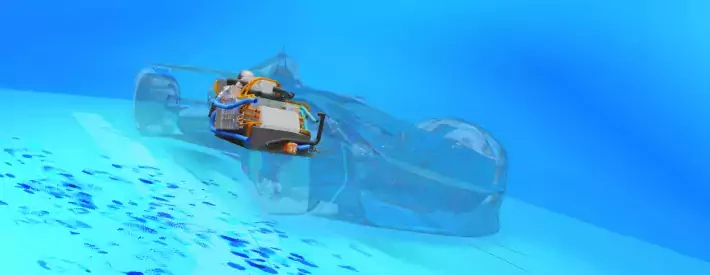How it works… Hydrogen power

Hydrogen is the simplest and lightest element in the universe, as each atom has just one proton and one electron. It’s also the most abundant element in the universe. Stars like our Sun consist mostly of hydrogen. It’s a gas at room temperature, and it condenses to a liquid at -253ºC.
Why is it described as an energy carrier?
Energy carriers are substances that store of energy in a usable form. Hydrogen actually has the highest energy content of any common fuel by weight (about three times more than petrol or diesel), but it has the lowest energy content by volume (about four times less than petrol or diesel).
Where do we get it from?
Hydrogen is almost always found as part of another compound, such as water (H2O) or methane (CH4). For use in vehicles, it must be separated out into pure hydrogen (H2), whether that’s for use in an engine or fuel cell, or as storage.
There are several ways to make hydrogen, and more are under development, but the two main methods at the moment are:
- Steam reforming, where a mixture of hydrogen, carbon monoxide and a little carbon dioxide is created by reacting the methane in natural gas with high-temperature steam. The carbon monoxide is then reacted with water to produce even more hydrogen; and
- Electrolysis, where an electric current splits water into hydrogen and oxygen. If the electricity is produced by renewable sources, such as hydro, solar or wind power, the resulting hydrogen can be considered renewable too.
How is hydrogen distributed?
The cheapest way to deliver large volumes of hydrogen is via a pipeline. However, this involves high initial costs, and hydrogen’s properties mean that there are technical challenges relating to pipeline materials and compressor design.
For example, hydrogen can leak through steel. Tankers can be used, but it’s first necessary to cool the hydrogen to a temperature where it becomes a liquid. This process is expensive, but it does mean that hydrogen can be transported more efficiently. However, because it contains less energy per unit volume than petrol and diesel, transporting, storing and delivering hydrogen is currently more expensive than conventional fuels.
Is hydrogen the fuel of the future?
Yes, but a hydrogen car uses about three times as much energy as the equivalent pure EV. This is because a significant amount of energy is needed to create the hydrogen in the first place. More energy is then used in distribution. Converting it to electricity to power a vehicle uses energy too. However, hydrogen can be produced from a wide variety of sources, and once we are creating more clean energy than we can use, it could become an excellent storage medium.




